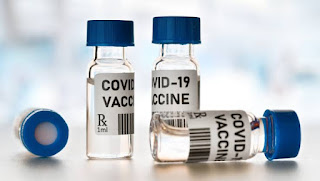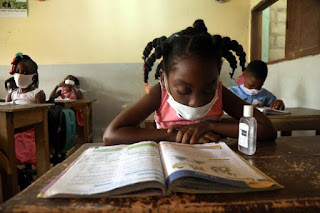COVID-19:WHO Announces Distribution plans Of Vaccines Across The World
As the possibility of a widely available COVID-19 vaccine steadily draws nearer, initial limitations in supply have left experts worldwide asking: Who should get the vaccine first?
The World Health Organization and its appointed Strategic Advisory Group of Experts on Immunization, or SAGE, have announced a worldwide vaccine distribution plan — it pushes back on so-called vaccine nationalism, the idea that each country should prioritize its own citizens.
Instead, the WHO adopts a global approach, prioritizing vaccination among the most vulnerable people everywhere.
“The first priority must be to vaccinate some people in all the countries, rather than all the people in some countries,” WHO Director-General Dr. Tedros Adhanom Ghebreyesus stated in Geneva on Friday. “Vaccine nationalism will prolong the pandemic, not shorten it.”
The WHO’s proposed vaccine distribution framework would ensure all countries access to the novel coronavirus vaccine once it becomes available. Participating upper- and middle-income countries, also called “self-financing” countries, will provide funding for the vaccine accelerator program, abbreviated COVAX, bearing in mind that the long-term goal is global prosperity.
Seventy-eight wealthier countries have endorsed the program, with Germany, Japan, Norway and the European Commission this week showing an interest in participating in the COVAX facility as self-financing countries. So far, a total of 170 nations plan to participate in COVAX, representing around 70 percent of the world’s population;the United States not being among them.
“The idea behind the COVAX facility is that the world community unite in an enlightened and self-interested way to both incentivize and then distribute the vaccine so that there’s no country in the world where no vaccines are available right from the beginning,” stated Dr Ruth Faden, Ph.D., M.P.H., founder of the Johns Hopkins Berman Institute for Bioethics.
“The countries that come in who are self-financing are essentially helping themselves by helping the world.”
In addition to putting in place an equitable distribution strategy among countries, the WHO’s framework also explores vaccination priorities within each country.
By last week a committee that advises the US Centers for Disease Control and Prevention proposed four sequential phases of vaccine prioritization within the US, starting with high-risk health care workers, people with serious medical conditions and seniors living in crowded facilities.
The WHO guidelines don’t state the order in which certain groups would receive the vaccine, but the plan does highlight some vulnerable groups as a higher priority for global impact, with some flexibility based on each country’s specific needs.
“We specifically did not say which groups should be prioritized first, second and third,that will come later.” said Faden, who consults as a member of the working group that helped draft the framework but does not represent the international agency.
Local transmission patterns, the general quantity of vaccine supplies and a nation’s infrastructure all would influence distribution tactics, Faden added. These might change between now and when a vaccine is approved, so as more information becomes available, the SAGE group would then begin prioritizing specific groups.
The framework’s flexible approach is maybe exemplified in the way children would be considered for vaccination.
“There’s tremendous focus in our values structure around the negative impact that the pandemic has had on the well-being of children — there’s 1.5 billion kids out of school,” Faden said. “It’s just staggering, globally, the number of children whose lives have been disrupted. The goal is to get kids in school, full time, as quickly as possible.
“As the vaccine becomes available, it may be that the first-line strategy is to vaccinate teachers and school staff and not children, if only because the data will come first in adults.”
In the United States, Pfizer/Biontech recently revesled plans to expand testing to adolescents as young as 16.











Comments
Post a Comment